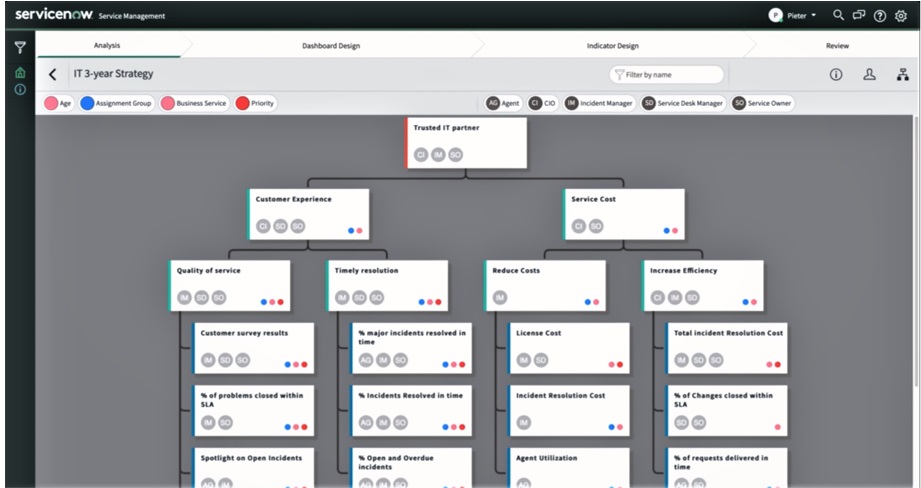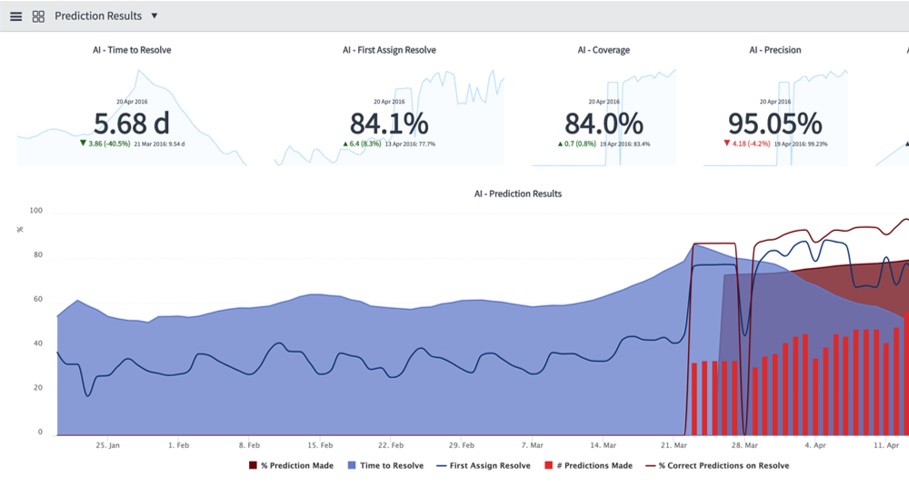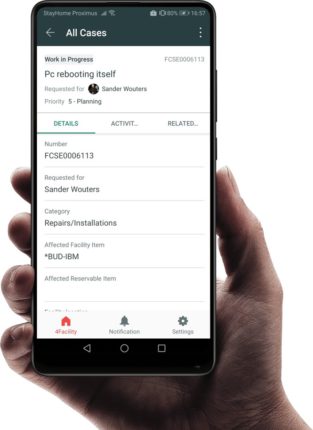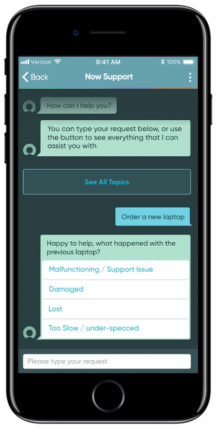All you need to know about ServiceNow ITSM
Quickly jump to:
- What is ServiceNow ITSM?
- ServiceNow ITSM takes your IT maturity to the next level
- What are the benefits ServiceNow ITSM brings?
- Why choose ServiceNow ITSM?
- What are the ServiceNow ITSM modules?
- ServiceNow ITSM Integrations
- What are the costs for implementing ServiceNow ITSM?
- How do you implement ServiceNow ITSM?
- CMMI Maturity Level
- ITSM According to Gartner
- Improving the Employee Experience
- Improving the Customer Experience
What is ServiceNow ITSM?
Like all ServiceNow solutions, ITSM (IT Service Management) is a cloud-based, mobile-first solution that enables organizations to manage and track digital workflows within a unified, robust platform. With all modules based on the IT Infrastructure Library, ServiceNow’s ITSM gives you grip on your IT.
With the ever-growing need for digitizing our day-to-day work, IT service delivery is a vital part of any organization. Over the past decade, the delivery focus has shifted from hardware-focused to SaaS solutions and Vendor Service Management. Increasingly also, accelerated digital transformation—while driving business growth—is required to deliver outstanding employee experiences and intelligent IT service management.
Above all, organizations are looking for an ITSM solution that is flexible and capable of being adjusted to changing needs and to new ways of working in a cost-effective way, while also meeting the high expectations of users. ServiceNow makes all this possible by enabling you to make data and processes service-oriented, to redefine operational ITSM workflows and, most importantly, by providing you with a full continuous improvement process including AI capabilities to take your IT organization’s maturity to the next level.
For you?
According to Gartner ‘ITSM tools help infrastructure and operations (I&O) organizations manage the consumption of IT services, the infrastructure that supports the IT services and the IT organization’s responsibility in delivering business value with these services. These are most heavily used by IT service desks and IT service delivery functions to support the tasks and workflows for processes including incident, request, problem, change, service level, knowledge and configuration management.’
ServiceNow ITSM brings intelligent automation, machine learning, and virtual agents to organizations both small and large. Governmental organizations, commercial businesses, Managed Service Providers and even heavily regulated industries such as finance, utilities and pharma are getting more from their IT investments with actionable insights into their service processes thanks to ServiceNow ITSM.
ServiceNow ITSM takes your IT maturity to the next level
- Improve service experience – Provide consistently great service and allow your people to work on more meaningful tasks by automating support for common requests with chatbots
- Boost IT productivity – Machine learning supports you in automating routine tasks and increase productivity
- Get new insights – Dashboards and analytics provide real-time, actionable information to continually improve services
- Consolidate IT services – Use built-in best practices to rapidly consolidate your inefficient tools to a single system of action in the cloud

What are the benefits ServiceNow ITSM brings?
ServiceNow ITSM provides a better operating model for your IT organization. You enjoy a flawless user experience, at reduced cost, with a flexible and scalable solution that works better and faster with a significantly faster Time to Resolve.
Raising the bar to reach a Level 4/5 maturity, which is still impossible with most ITSM solutions to date, is part-and-parcel of ServiceNow ITSM. It is what is needed to support enterprise-wide digital transformation.
Making the move from legacy on-premises IT to cloud-based ServiceNow ITSM means opening up your organization for better decision making, creating better customer experiences, empowering your people with connected information, case management best practices and automated fixes for common issues. Importantly, it provides you transparency across your entire IT service ecosystem and the flexibility to adapt where necessary, to meet current and future needs.
Why choose ServiceNow ITSM?
With IT innovations in the B2C world redefining our concept of services, IT customers now expect nothing less than the same speed, availability and comfort from their own IT services. Obviously, the pressure is on for organizations to deliver more in a world where the functional and technological complexity of infrastructures is increasing … fast.
Of course, it’s possible to put in place processes that bring such looked for IT service improvements. Chances are though, that such processes—sooner rather than later—will require tweaks, updates, improvements or whatever to continue to meet service level expectations.
This is where ServiceNow ITSM stands out from other ITSM solution providers: its powerful reporting tools and AI capabilities enable constant improvement of your processes. What’s more, ServiceNow’s powerful CMDB—which many other solutions similarly lack—enables precise mapping of your IT architecture. Its modules work much like Lego building blocks. Add them where and as required to boost performance and reach a 4/5 IT maturity level.
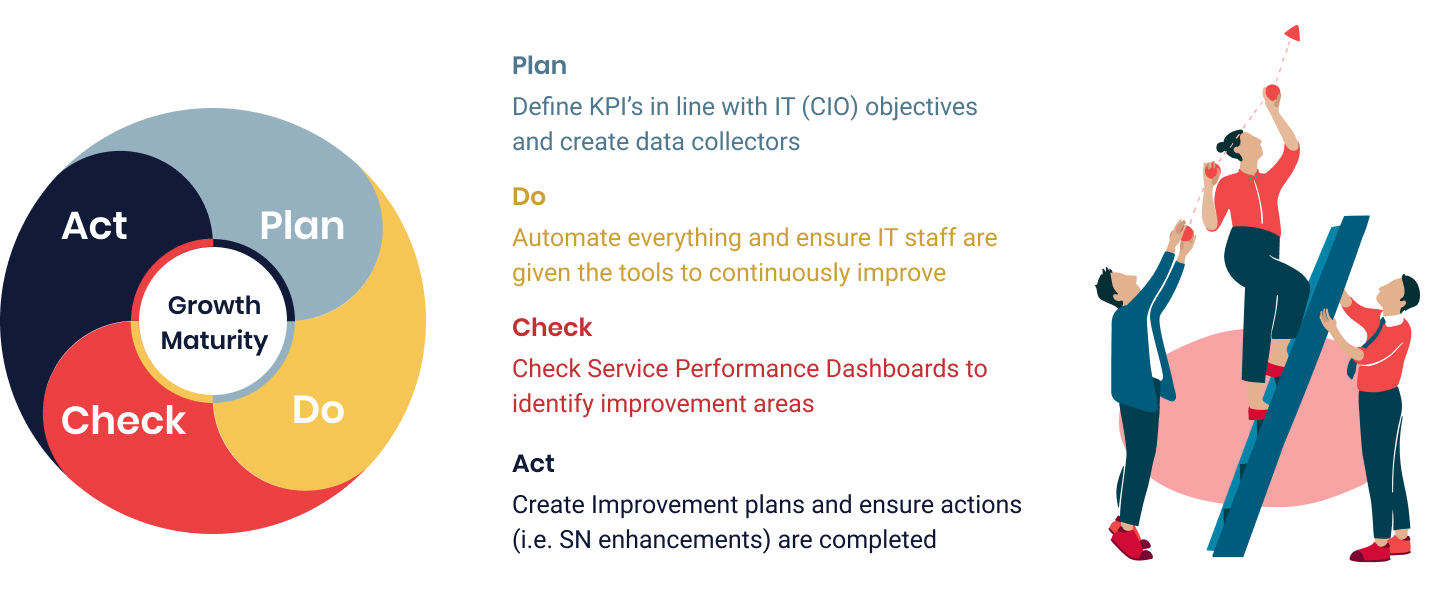
Besides improved customer satisfaction with IT, ServiceNow’s ITSM improvement cycle and flexibility brings quantified benefits to organizations. A 20% reduction in service requests and a 50% reduction in time to resolve thanks to automation are no exception to the rule.
More value
According to Gartner there are over 400 ITSM products in the market. Most of these however are basic or intermediate tools that focus on IT service functions targeted at maturity-level 3 organizations. Such solutions include TopDesk and 4Me, which compared with ServiceNow ITSM, have inferior reporting and integration solutions. ServiceNow also distinguishes itself with native mobile capabilities and innovative, value adding AI and ML intelligence.
What are the ServiceNow ITSM modules?
ServiceNow ITSM is a powerful and flexible solution that comes with a wealth of out-of-the-box modules. It is always best practice to stay as close to OOTB as possible to not only keep costs to a minimum, but the built-in best practices help you to harness shared data and disparate tools to a single system of action.
For ease, we’ve clustered the modules for you:
- IT Foundational modules
- IT Operations modules
- IT Improvement modules
- IT Experience modules
IT FOUNDATIONAL MODULES
CSDM – Common Service Data Model
The ServiceNow Common Service Data Model (CSDM) connects your CMDB to services from both a business and technical perspective. It is the foundation for working towards a service-aware CMDB. The benefits of CSDM are many—from more accurate reporting, increased platform maturity, a single service language, staying OOTB to improved control over service costs.
Configuration Management
The ServiceNow Configuration Management Database (CMDB) is an easy-to-use, cloud-based single system of record for your IT infrastructure and digital service data. Every ServiceNow application uses this data model, ensuring that the ServiceNow CMDB delivers value out of the box and that ServiceNow applications work seamlessly with each other. Working seamlessly across the entire IT value stream, it will help you diagnose service outages, evaluate the impact of changes, manage your assets, improve compliance, and much more.
Knowledge Management
Knowledge Management captures the ‘tacit’ knowledge in your organization and makes it ‘explicit’ knowledge in the form of so-called knowledge articles. It helps you improve self‑service and case resolution by automatically identifying and visualizing knowledge gaps using machine learning and assigning gaps to authors for resolution.
- Empower agents and employees to capture knowledge articles in context during work processes, such as case or incident management
- Continuously improve organizational knowledge with a feedback process to act on customer and internal user feedback
- Crowdsource knowledge and convert unstructured conversations into structured knowledge
Service Catalog
The no-code Service Catalog automates workflows and approvals to enable organizations to improve the customer experience, accelerate service delivery and reduce operational costs. The Service Catalog’s APIs make using internal portals easy, without scripting or customization being required.
- Highly intuitive interface boosts self-service
- No more double work increases efficiency
- Transparent offering of services
IT OPERATIONS MODULES
Service Level Management
ServiceNow Service Level Management (SLM) is a comprehensive platform capability for documenting and tracking all service commitments between IT, service providers, and customers.
Once defined, SLM provides detailed visualizations to easily understand active SLAs, automates notifications and escalations to keep all relevant parties informed, and provides access to key metrics to understand organizational performance against service commitments.
- Meet time & quality expectations
- Spot trends and prevent potential issues
- Common services expectations drive customer satisfaction
Incident Management
Keep employees productive and happy by ensuring they can easily contact support to track and fix issues with ServiceNow Incident Management. Users can connect with IT through web or mobile self‑service and virtual agents powered by natural language understanding (NLU).
Machine learning automatically assigns incidents to the right resolution groups for faster resolution. A dedicated portal for Major Incident Management enables swift resolution by bringing together the right resolution teams and stakeholders to restore services.
- Manage IT processes and collaborate using a single platform
- Chatbots and self-service portal minimize incidents
- Better service experience with employees empowered to generate answers from anywhere
Problem Management
ServiceNow Problem Management makes it possible to restore services quickly—often helping you prevent issues from happening in the first place. With a structured workflow for diagnosing root causes and fixing problems, Problem Management empowers you to eliminate recurring incidents and minimize the impact of unexpected disruptions.
Automated workflows allow problem managers to easily document workarounds and solutions, so IT teams can focus and get more done. With a consolidated view of the incidents and related changes, IT can deliver faster responses and solutions.
- Follow performance proactively and minimize disruptions
- Maximize transparency and create insight into known errors or solutions
- Get to the cause of an issue quick and adapt workflows
Change Management
With ServiceNow Change and Release Management, you can transform your change managers into change enablers. Minimize failed changes and reduce cost per change with automatic conflict detection and risk assessment. Enable DevOps change process with automated change approvals and governance.
ServiceNow Change and Release Management also lets you automate approvals for low‑risk changes to drive greater process efficiency. For complex changes, the Change Advisory Board (CAB) Workbench serves as a single destination to automatically plan schedule and run CAB meetings efficiently.
- Automatically approve low-risk changes
- Leverage automated change frameworks to accelerate change management
- Use a single depositary for all change processes across IT
Request Management
ServiceNow Request Management delivers employee self‑service capabilities through a published catalog of services, automated workflows, and service level agreements. Mobile functionalities give employees the freedom to request services anytime, from any device – and get automated status updates to ensure expectations are met.
- Consumer-style, native mobile experience
- Automated workflows speed up and improve service quality
- Status updates increase user satisfaction
IT IMPROVEMENT
Continual Improvement Management [PRO]
Continual Improvement Management enables you to discover improvement opportunities, set quantifiable goals and track progress against those goals. Embed continual improvement with a structured framework that brings together people, processes, and data in one place and helps achieve service excellence in all your processes.
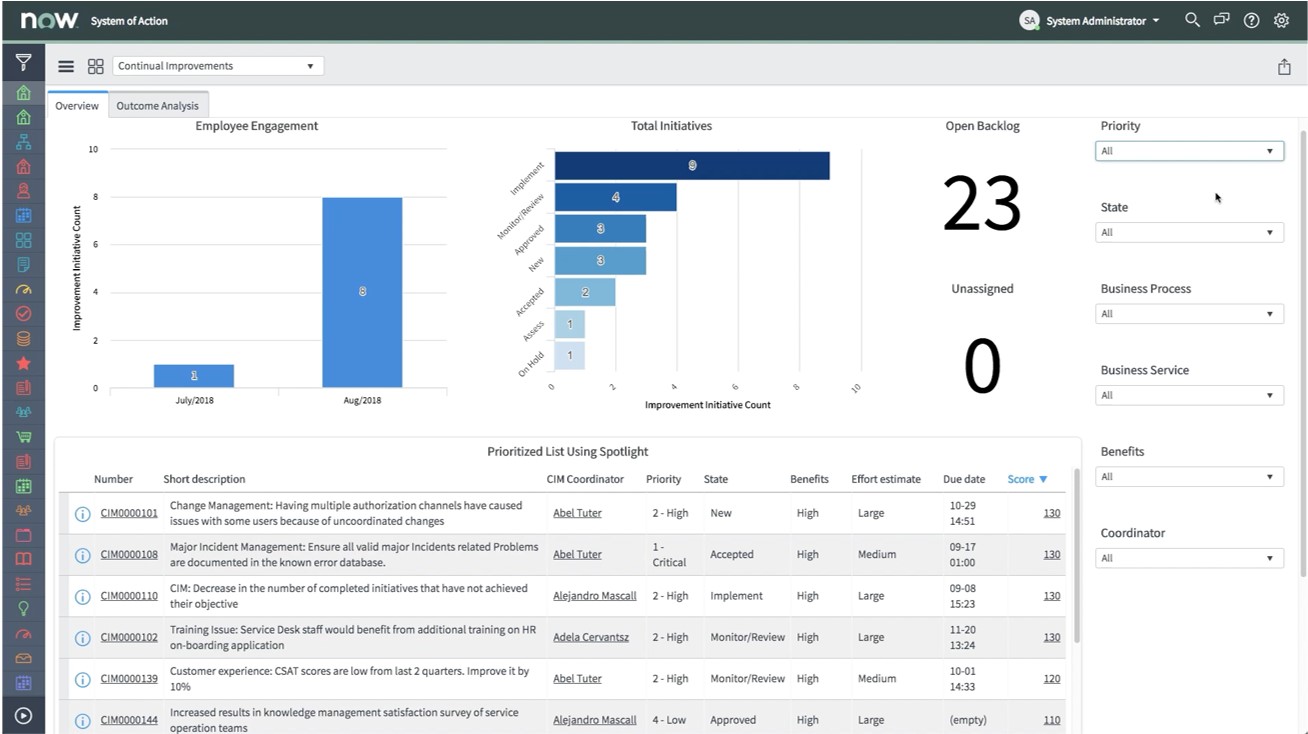
KPI Composer
Ensure that your performance management strategy aligns with business goals and has support from executive sponsors with the KPI Composer. This holistic, coordinated approach ensures that stakeholders are completely aligned on the desired outcomes and requirements before implementers spend time working on any technical deliverables.
- Visualize performance improvement
Performance Analytics [PRO]
Drive digital transformation with real-time insight into business performance. Optimize service and improve processes pro-actively. Make smart decisions that result in better service quality and increased efficiency based on easily accessible KPIs.
- Anticipate trends with continuous monitoring of current trends and historical performance
- Know where resources are needed: detect service bottlenecks as they occur and identify areas for improvement
- Identify areas where automation and self-service can increase efficiency and cut costs
- Earmark areas for performance improvement and take appropriate action

Predictive Intelligence [PRO]
Empower your employees and customers with more time and energy to focus on more complex tasks and requests. With the out-of-the-box machine learning models that categorize, route and prioritize issues, you can directly deliver requests to the right agent with the right prioritization. This enables agents to resolve issues fast, while exceeding service levels and increasing customer satisfaction.
- Resolve issues faster using machine learning to intelligently
- Automatically categorize tasks using the power of machine learning and your historical data
- Decrease resolution times and errors through accurate assignment routing
- Increase agent productivity by saving time spent on manually classifying incidents
Automation via IntegrationHub
IntegrationHub helps simplify cross-organizational automation by connecting ServiceNow workflows to critical business systems. It makes integration easy with no-code setup using integration hub spokes. It also enables the development of apps with source control and continuous integration and continuous delivery toolsets.
- Developers can work together and use enterprise repositories.
- Get changes from development, through test, and into production faster.
- Build an automated pipeline to test and deploy apps to accelerate development.
- Deliver applications faster so you can get feedback early and often.
Process Automation Designer
Build and manage multiple complex workflows easily without a single line of code. Connect disparate workflows, flow components, and actions into an end-to-end process. Visualization of complex processes for your service desk employees makes it easy for them to know what to do.
Automation of common processes or integration of third-party activities or apps is easy via out-of-the-box IntegrationHub spokes.
IT EXPERIENCE
Service Portal
The ServiceNow Service Portal makes it extremely easy to integrate mobile apps within the single portal, thereby giving everyone simple and immediate access to services, information, and applications.
- Create engaging experiences
- Boost productivity and user satisfaction
- Use functional, context-aware components or create custom parts from scratch
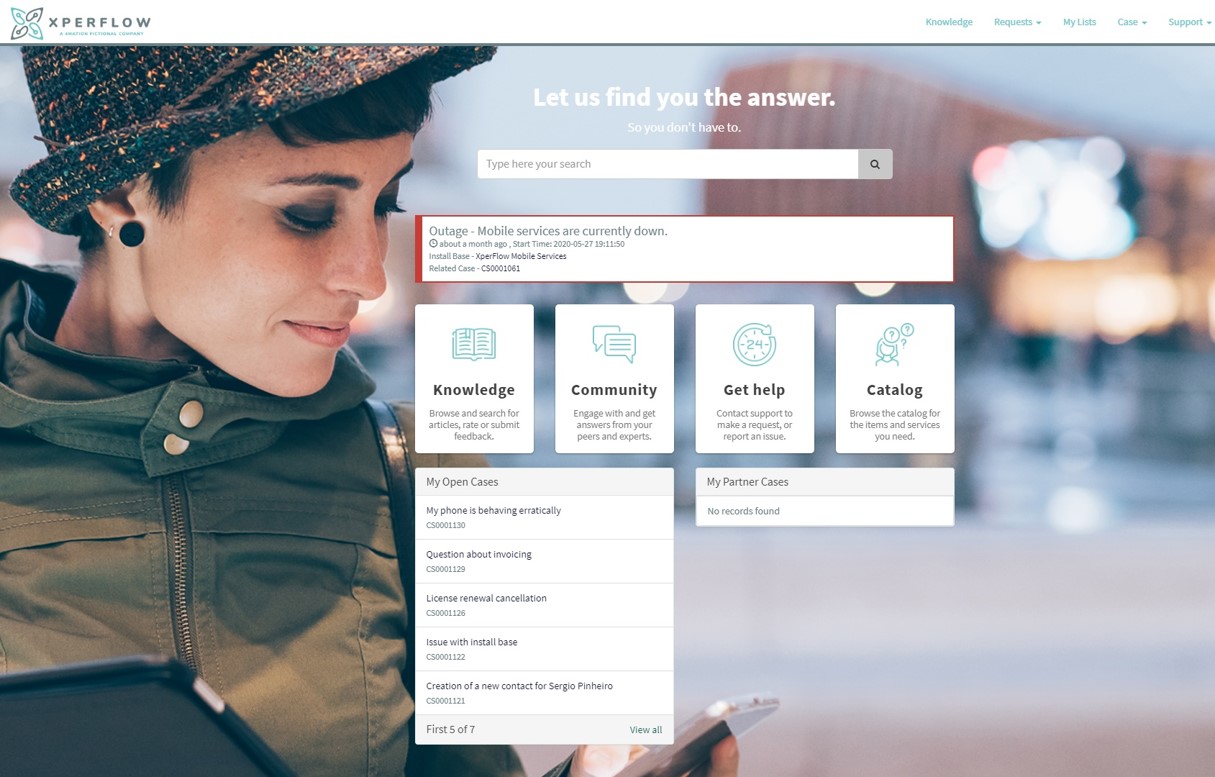
Mobile App
With the help of the ServiceNow Mobile App, your customers and employees will benefit from an integrated, tailored mobile experience.
Virtual Agent [PRO]
High volume and common requests take up a considerable amount of time to resolve. The AI-powered Virtual Agent chatbot provides instant answers quickly to such routine issues. It helps you to reduce cost, increase customer satisfaction, and keep your people focused on more pressing issues.
- Improve service by providing customers and employees instant answers through 24/7 automated support
- Reduce agent workload by resolving common requests
- Scale business efficiency by lowering costs and handling higher volumes of routine tasks
Agent Workspace [PRO]
This is much like a command center from which service agents can take action. Providing them with a single-view, intuitive layout, they also get to see the full issue context, analytics, as well as AI-prompted recommendations to help resolve issues.
- Enables agents to work on multiple issues at the same time
- Quicker time to resolve thanks to automated machine learning-based recommendations
- AI proactive identification of potential issues or incidents
- Greater transparency through feed of updates and insights
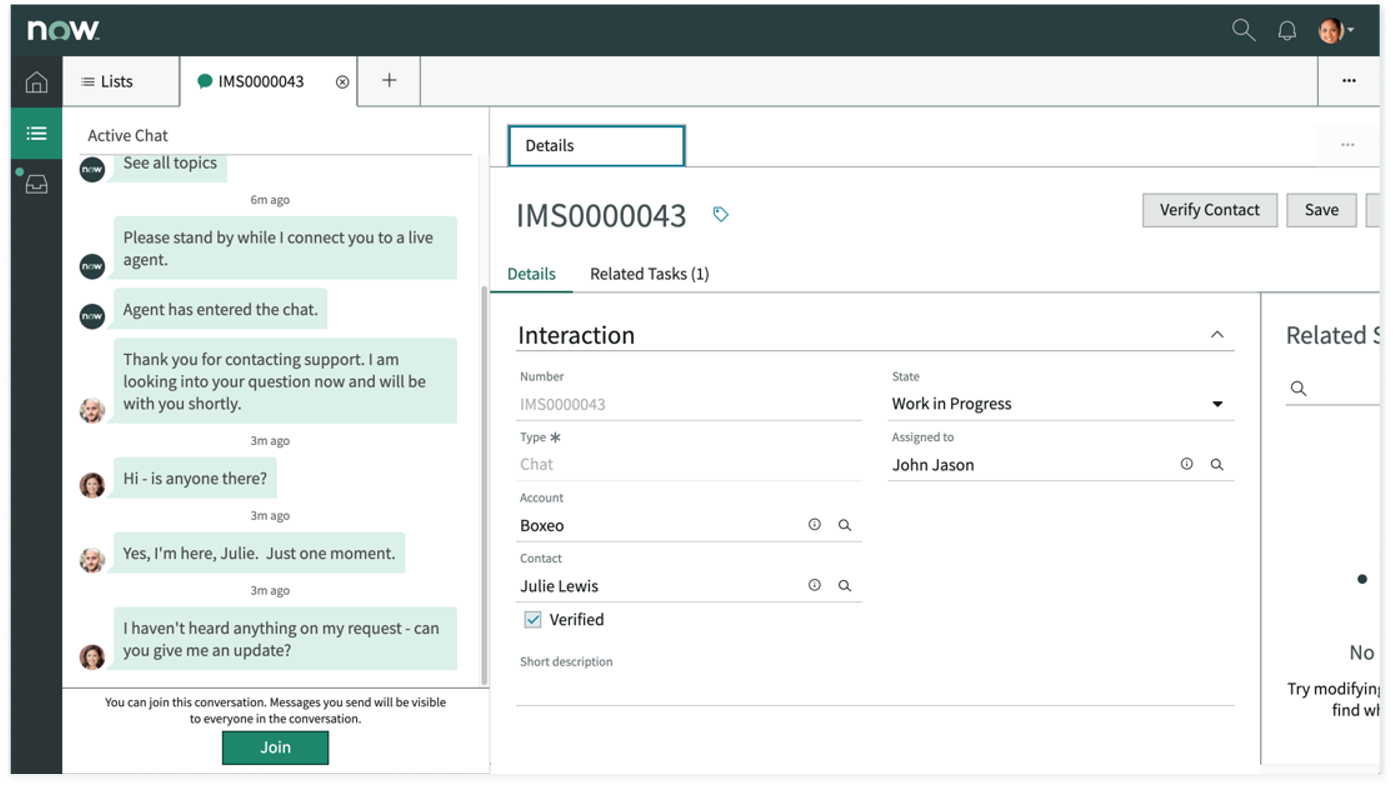
ServiceNow ITSM Integrations
ServiceNow offers several automated intelligence solutions – such as Virtual Agent and Predictive Intelligence – to identify the major clusters of work, including incidents and requests. This information is used to identify and realize the most valuable self-service and automation use cases, for instance: password resets, mailbox, procurement, employee profile updates and more. In addition, Machine Learning supports automated and intelligent ticket routing.
Automation of such back-end workflows provides speed and considerable savings. In fact, customers can achieve 80% savings in service delivery costs through request automation. Automation drives faster mean time to resolution. Requesters get what they need quickly – regardless of what apps or systems the request involves – instead of waiting for a human to be assigned and then to take the necessary manual actions to complete. Faster resolution means happier, more productive employees.
According to Gartner: ‘Because password problems make up 20 to 30% of all IT service desk volume, automating this function can save organizations the costs of supporting this type of request.’
Automation of routine requests by implementing end-to-end workflow automation will:
- Lower service delivery costs and increase the volume of requests that can be managed by the same number of agents
- Boost employee and user experiences
- Boost productivity by eliminating manual, repetitive work
With the savings in IT productivity, IT employees are able to reallocate effort to higher value tasks, which enables the flexibility to scale without adding IT headcount.
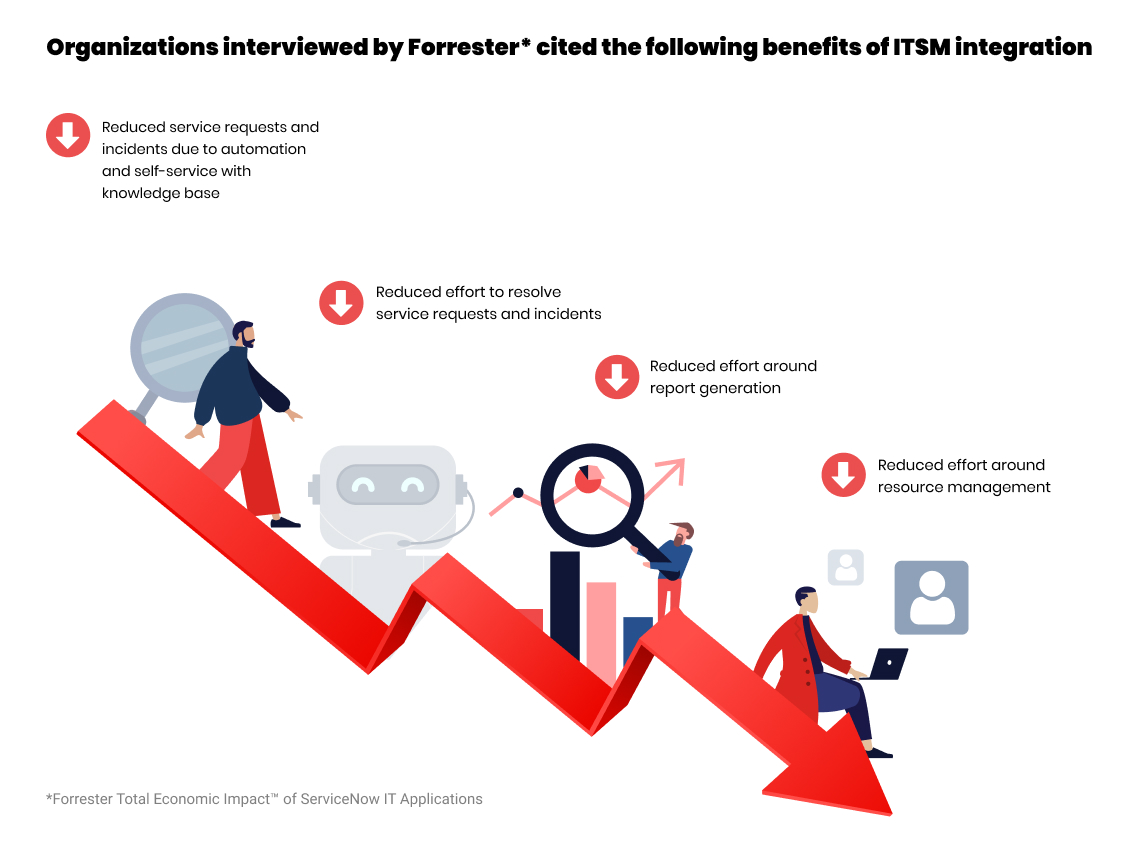
What are the costs for implementing ServiceNow ITSM?
IT Service Management is sold using tiered pricing and is available in three packages:
- IT Service Management Standard – Includes all processes: Incident, Problem, Change, Release, Cost, Asset Request, Walk-Up Experience and now Notify.
- IT Service Management Professional – Includes ITSM Standard + Performance Analytics, Continual Improvement Management, Agent Intelligence, Virtual Agent, Vendor Manager Workspace, Service Owner workspace, and Dynamic Translation (premium platform capability).
- IT Service Management Enterprise – Unrestricted user model.
Organizations looking to implement ServiceNow ITSM should also include implementation, subscription, and internal costs when calculating the total costs of their ServiceNow solution. These can include costs such as:
- Professional services costs to ServiceNow
- Internal FTEs for implementation
- Fulfiller and ITBM worker training
- Employee training on the use of the ServiceNow service request system
- Internal FTEs for maintenance, upgrades, new builds, and testing
How do you implement ServiceNow ITSM?
Typically, organizations turn to ServiceNow ITSM for agility and the ability to quickly deploy changes. With ServiceNow ITSM such organizations make the leap to a cloud-based ITSM. They get one platform, one architecture and one data model that supports digital right across the organization.
Getting it right – Staying out-of-the-box
As with all things involving change, there’s no one path to follow. Having said that, there are a number of steps that should be taken to streamline ServiceNow ITSM implementation.
- Define your business goals and key performance indicators (KPIs) upfront.
- Make your implementation approach a phased one. By first ensuring incident and problem management are functioning as required, you are future-proofing your ITSM based on a sound and solid CMDB, the blueprint of your IT eco-system.
- Use out-of-the-box functionality first! Not only will staying out-of-the-box keep implementation costs down, it will also help boost adoption with smooth working operations.
Too much customization of out-of-the-box functionalities can seriously impact the effectiveness of any functionality. Especially, in organizations working with older instances of ServiceNow (Geneva or earlier), it could be worthwhile to start afresh with an out-of-the-box instance that comes with all the latest platform features.
CMMI Maturity Level
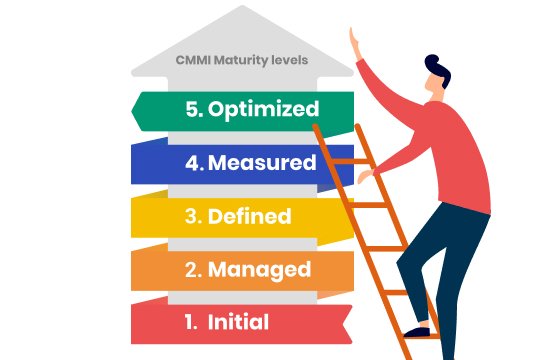
With digitization becoming more and more important, the pressure IT Service Management is facing is real. In order to keep up with the growing and ever-changing demand, you’ll need to mature your IT organization in order to meet business expectations. Here’s how ServiceNow ITSM can help you jump to CMMI Maturity level 3 or even 4.
ITSM According to Gartner
According to Gartner: ‘There are over 400 products in the market, but most of them are basic or intermediate tools that focus on IT service desk and ticketing functions targeted at lower-maturity I&O organizations … I&O organizations intent on achieving higher levels of maturity within 18 months should consider advanced ITSM tools to gain value from solutions focused on a broader, end-to-end context of IT service support and delivery. Vendors focused on advanced-maturity use cases can be expected to develop and execute platform strategies to distinguish themselves from simple SaaS applications, providing more flexibility and product capabilities. These vendors also tend to invest more heavily in innovative features like AI and ML, as their customers can leverage their scale and data quality to achieve higher results than less mature organizations.’
ServiceNow is a Leader in Gartner’s so-called Magic Quadrant for IT Service Management Tools.
Gartner: ‘Its IT Service Management product is focused on providing a single platform connecting ITSM and non-IT workflows, augmented by a set of native AIOps and ITOM extensions. It is targeted at organizations with intermediate to advanced I&O maturity. Since the last publication of this Magic Quadrant, ServiceNow made platform-level acquisitions to add native AI, ML and natural language processing functionality, and added workspaces for service owner and vendor manager roles.’
‘As a result of ServiceNow’s dominant market position, its platform has helped build a strong partner ecosystem, including professional services and integrations. In 2019, ServiceNow made significant updates to its partner program to help customers identify the right partners and to drive more consistent experiences when working with them.’
‘ServiceNow’s acquisition of several AI- and ML-focused companies provides it with not only native IP to engineer into its platform, but also in-house expertise to innovate these features over time. Many of the vendor’s competitors rely on third-party partnerships for this extended functionality.’
ServiceNow versus competitors
Gartner places BMC and Ivanti in the ‘Leaders’ quadrant as well in second and third place respectively. Like ServiceNow, BMC is targeted at organizations with immediate to advanced levels of I&O maturity. However, BMC Helix platform, according to Gartner, ‘has yet to resonate with customers that still associate the product with legacy experiences.’
Ivanti, an ITSM product with integrated solutions for discovery, endpoint automation and self-enablement, has a portfolio that ‘has appeared disjointed to customers rather than telling a cohesive story across its products. As a result, customers often perceive Ivanti as a point solution rather than a strategic solution provider.’
Gartner gives an honorable mention to TOPdesk: ‘TOPdesk is exclusively focused on its ITSM tool. Its TOPdesk Enterprise aims to drive ease of use and quick implementation, while offering support for other non-IT workflows. TOPdesk’s customers are primarily located in Europe. TOPdesk lacks some of the graphical process designer capabilities required to fully satisfy Gartner’s inclusion criteria for this Magic Quadrant.’
Improving the Employee Experience

As many organizations move towards a digital transformation, they are discovering that automation equals better or more robust AI, better user experience, mobility and flexibility. ServiceNow enables all those things to come together to provide a solid, stable product that empowers end users in their business practices.
But, at the same time, organizations also realize that IT isn’t just about platforms, systems or tools. Importantly, it’s about the people using IT in their daily working lives. So, instead of using tech to create the employee experience, ServiceNow – with its inbuilt Plan-Do-Check-Act cycle – lets you know what your employee experience is and use it as guiding principle for all things IT.
Partnering with Giarte, we at Plat4Mation make it possible to align IT even further with the needs and requirements of users, employees and your business. Using plug-ins for ServiceNow ITSM, employee experience is monitored as part of the continuous improvement cycle.
Improving the Customer Experience
Accustomed to the conveniences offered by technology today, users demand immediate, relevant, and effortless solutions to their requests. A recent study by Forrester indicates that ‘two-thirds of customers say valuing their time is the most important thing a company can do to provide them with good service’. Self-service is an effective way to make this happen.
With ServiceNow ITSM, all systems within an organization are linked to the integration hub. In this way, all relevant data becomes accessible and can be used to give automated answers to the most common service requests, without the need for human interaction.
AI and virtual agents help resolve issues directly, freeing up your agents to do the more complicated stuff with a full overview of issue history, changes, user information and AI-generated recommendations. Employees are empowered to generate answers from anywhere, leading to highly satisfactory service experiences.
In the study, Forrester reports that with ServiceNow ITSM, 20% of the most common service requests and incidents were resolved using automated solutions. With requests being routed immediately to the proper resolution group, work spent by agents is reduced by 66%.
Get in touch with one of our ServiceNow ITSM experts!
We can’t wait to help make work flow with ServiceNow ITSM! Fill out the form below, and we will get you in touch with the right ServiceNow expert.





